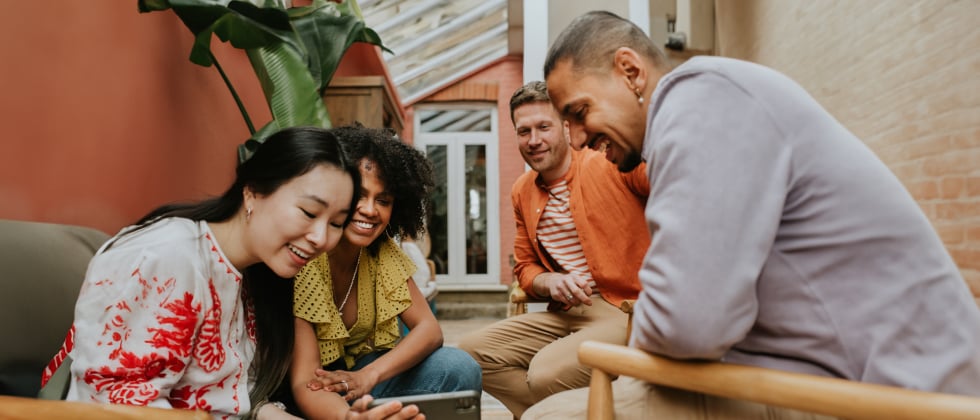
Attachment Styles: how your childhood relationships shaped your current ones
It is true! Your childhood relationships shape the way you connect with others today. Discover how attachment styles influence your love life and the patterns that define your relationships.
Ever wondered why you react to people – friends, families, or romantic partners – the way you do? It might just be your attachment style. Wondering what attachment styles are? They’re how you relate to other people. In this article, we’ll take a look at attachment styles, the types of attachment styles, what the meaning of attached is – and how attachment styles in relationships work. We’ll look at how understanding your attachment style can help improve your relationships, and offer you tips on how to do so.
Understanding Attachment Theory
Attachment styles were first developed by researcher John Bowlby, who described attachment as a ‘lasting physical connection between human beings’. As a psychoanalyst, Bowlby strongly believed that early childhood experiences had a major influence on the rest of people’s lives. In the 1970s, psychologist Mary Ainsworth conducted further research into attachment, and concluded that there were three basic attachment styles – secure, anxious, and avoidant. Later, researchers Main and Solomon added a fourth attachment style, disorganized1.
Research2 over the years has concluded that early attachment styles can predict behavior later in life. That said, you can’t completely blame your inability to communicate with your partner on your parents; research also shows that later experiences can have an impact on your attachment style. There is, after all, a lot of time between infancy and adulthood!
In his research, Bowlby also talked about the reasons we might develop a particular attachment style3. According to his theory, consistent care during childhood leads to trust. Secondly, in his opinion, childhood experiences lead to expectations of behavior that persist for the rest of our lives. While Bowlby presumed that our attachment styles are fixed, later research has shown that it is possible to adjust them.
What are attachment styles?
As we saw above, there are four main attachment styles – secure, anxious, avoidant, and disorganized. As a general rule, how we’re treated as children – especially by our primary caregivers – has the most impact on our attachment styles.
Secure Attachment Style
People with a secure attachment style have the ability to build healthy, fulfilling and long-lasting relationships. As children, they felt safe, valued, understood and comforted by their primary caretaker. They trusted their caretaker to return when they left, and to be there for them in general. As adults, people with a secure attachment style generally feel safe and confident in their relationships – not only with romantic partners but with family and friends too. As a general rule, their levels of self-esteem are high, they seek help and support when they need it, and they have no problems connecting and sharing feelings with partners and close friends.
Some other characteristics of people with a secure attachment style include:
- Being able to trust others easily
- Being able to communicate effectively with partners, friends, and family
- Being able to regulate their emotions even in tense and high-pressure situations
- Feeling comfortable when they spend time alone, rather than constantly seeking company and validation
- They can connect with others easily, whether that’s people close to them or even acquaintances
- They can manage conflict in a healthy way
- They can make themselves emotionally available to the people in their lives
Anxious attachment style
People with an anxious attachment style are often afraid of rejection or abandonment and have a tendency to seek validation from outside sources. This is also known as anxious-ambivalent or anxious-preoccupied attachment style. Studies have shown that people with this attachment style had a low maternal presence in their lives as children. While they became upset when separated from their mothers, they weren’t particularly comforted by their return. Additionally, children with this attachment style are less trusting of strangers than children with other attachment styles.
As adults, people with an anxious attachment style continue to have a deep fear of rejection and abandonment. They may have low self-esteem and need to seek validation from other people. They worry about being close to people and fret that their partner does not reciprocate their feelings, which ironically tends to lead to more breakups. They tend to become very distressed when relationships end and are likelier to exhibit codependent tendencies. Some other characteristics of people with an anxious attachment style include:
- Having feelings of unworthiness
- Being highly sensitive to criticism of any kind
- Having difficulty spending time alone
- Suffering from low self-esteem
- Having difficulty trusting other people
- Dealing with feelings of jealousy
Avoidant attachment style
When their caretaker doesn’t show concern for their needs, children may develop an avoidant attachment style. An avoidant attachment style may also manifest in children whose parents were ill, died, or who were adopted. Children with an avoidant attachment style disregard their own needs and comfort in order to maintain the peace and keep their caretaker close by. They keep their struggles and feelings of anxiety under wraps, or try to deal with them alone. They also are likely to avoid physical touch and other traditional means of comfort, rarely ask for help, and avoid eye contact with other people.
As adults, people with an avoidant attachment style have a lot of trouble getting close to other people and forming bonds. They prize their independence and do not like to be vulnerable with people, even close family and friends. Some of the signs that someone has an avoidant attachment style include:
- Feeling a strong sense of independence
- Tending to dismiss others easily
- Having difficulty trusting others
- Feeling uncomfortable when people try to get close to you
- Avoiding intimacy, whether emotional or physical
- Having commitment issues
Disorganized attachment style
First proposed by researchers Main and Solomon, the disorganized attachment style is so named because children who have it don’t show a clear pattern of attachment behavior. They tend to exhibit a variety of behaviors in response to caregivers, including avoidance or resistance. Sometimes, they appear confused or apprehensive around caretakers. Research suggests that this behavior stems from inconsistent behavior on the part of the parents. As adults, people with disorganized attachment behavior continue to exhibit a combination of different attachment styles. On the one hand, they may strongly desire a connection with a romantic partner; on the other, they may struggle to open up and can even push the other person away. They have a hard time trusting other people and often push away their partners. People with a disorganized attachment style are unfortunately prone to unhealthy relationships with poor communication, toxicity, clinginess, and sometimes even abuse. The signs of having a disorganized attachment style include:
- Having difficulty trusting others
- Having trouble regulating your emotions
- Showing signs of anxious and avoidant attachment styles
- Having a fear of rejection
- Displaying confusing or contradictory behaviors
How do attachment styles affect relationships?
In a study by researchers Hazan and Shaver4, about half of all people (56%) identified themselves as having a secure attachment style, while 25% identified as avoidant and 19% as anxious. Each attachment style, but especially the three insecure styles (anxious, avoidant, and disorganized), have a specific impact on your relationships with your partner, family, and friends.
A major challenge with insecure attachment styles is a lack of trust in people. This can lead to self-sabotage in relationships, which then leads to conflicts or breakups, making you even less likely to trust people in the future – it’s all a vicious circle.
Another issue with different attachment styles in relationships are the conflicts that might arise when one person has attachment issues, and the other doesn’t. For example, someone with a secure attachment style may not understand why their partner doesn’t trust them, or someone with a disorganized attachment style may frustrate the people around them with their lack of consistency.
When it comes to navigating different attachment styles, knowing what attachment is and the different ways people express their attachment to each other is the first step in figuring out how to make your attachment style work for you.
Attachment styles and dating
Recognizing and working with your and your partner’s attachment style is key to any kind of relationship, especially when it comes to dating. Learning more about attachment styles and how they work is useful for three reasons:
Compatibility
If your attachment style means you’re not someone who is comfortable when forming deep connections, it’s probably not a good idea to date someone who tends to need plenty of attention – and perhaps even clinginess from their significant other. Figuring out where your attachment styles do and don’t match is key to figuring out if you’re compatible with each other long-term.
Conflict Resolution
Every relationship has conflicts of some sort; it’s what you do during and after your fights that matters. Knowing what your attachment styles are can help you communicate better with each other right from the start, making fights less severe, or even managing to bypass them entirely.
Character Growth
When you know your attachment style, you’re more aware of your own role in any fights or other relationship issues. This can not only help you work on your relationship with your partner, it can also make understanding yourself and working to change any behaviors you don’t like easier for both of you.
How to change your attachment style
While our attachment styles are strongly influenced by our experiences as children, that doesn’t mean we can’t change them to at least some degree as adults. The key is self-reflection, practice, and an understanding of attachment theory psychology. Here are some ways to transition to a more secure attachment style:
- Do your research. The more you know about attachment styles, the easier they will be to identify and work around.
- Seek help from people with secure attachment styles. It can be hard having healthy relationships if you’ve grown up without them. Find friends or extended family whose ability to have good relationships you admire; see what advice they can give you.
- Reflect on your own behavior. Whether it’s taking a few minutes to reflect at the end of the day or keeping an emotions journal, going over your previous actions can help you identify where your behavior could be different.
- Think about the other person. Part of having a secure attachment style is being able to recognize the impact your actions have on other people, especially loved ones.
- Communicate. Even if it’s hard, it’s important to express your feelings to the people in your life.
Learn from the past to make your romantic future better
Our personalities aren’t just things we inherit; they’re also strongly influenced by our experiences, as children, teenagers, and as adults. This is clearest to see with attachment styles. Knowing and understanding yours is not only key to knowing yourself better, but to improving your relationship with your partner, family and friends. It’s worth taking the time to dive deep into this aspect of your personality and figure out how to make it work for you; having a secure attachment style isn’t just good for you, it’s also good for the people around you.
Your search for a great relationship has never been easier with groundbreaking overhaul of the eharmony you know and trust.
We regularly review and update our articles to incorporate the latest research, expert insights, and study findings, ensuring you receive the most relevant information. Learn more about our editorial process.
- Current Version
-
-
Written by
eharmony Editorial Team -
Editorially reviewed by
Copy Editors -
Editorial quality review by
eharmony Editorial Team
-
Written by









